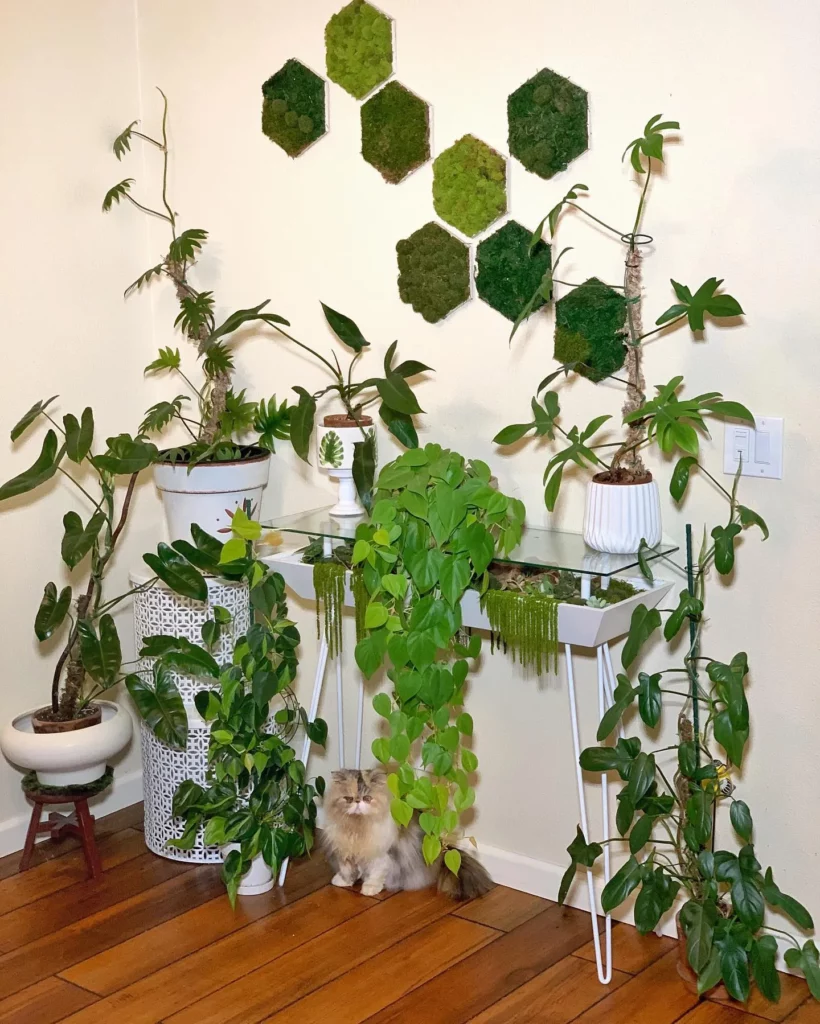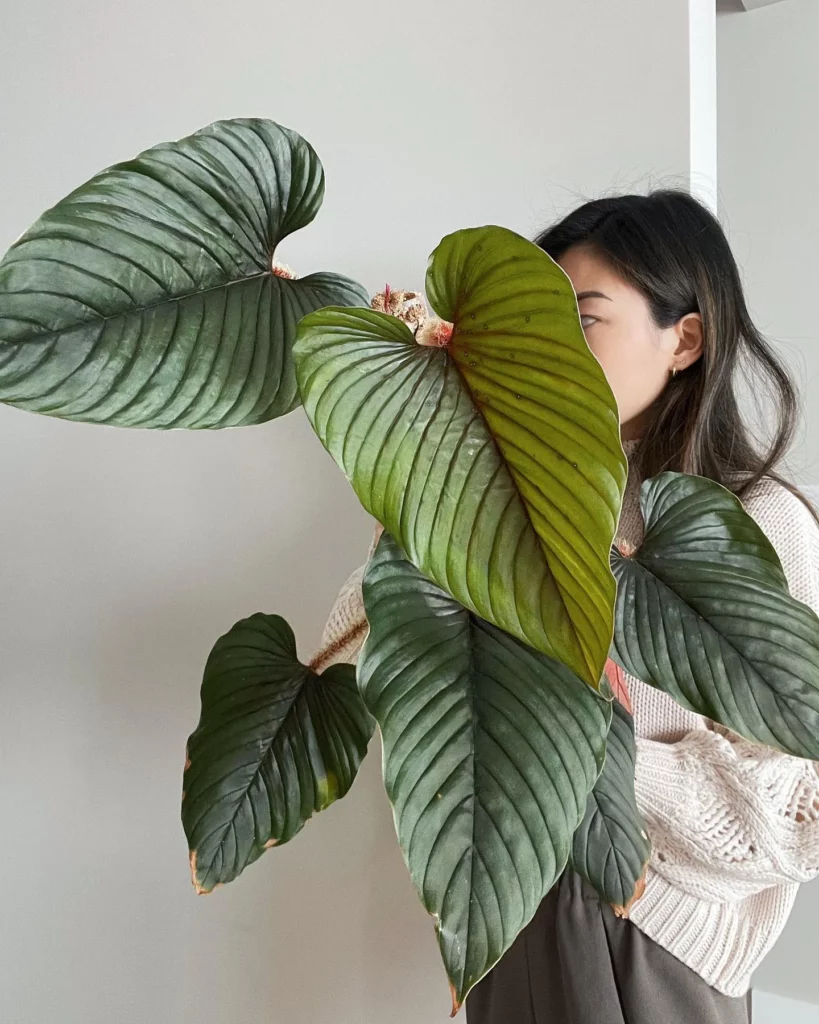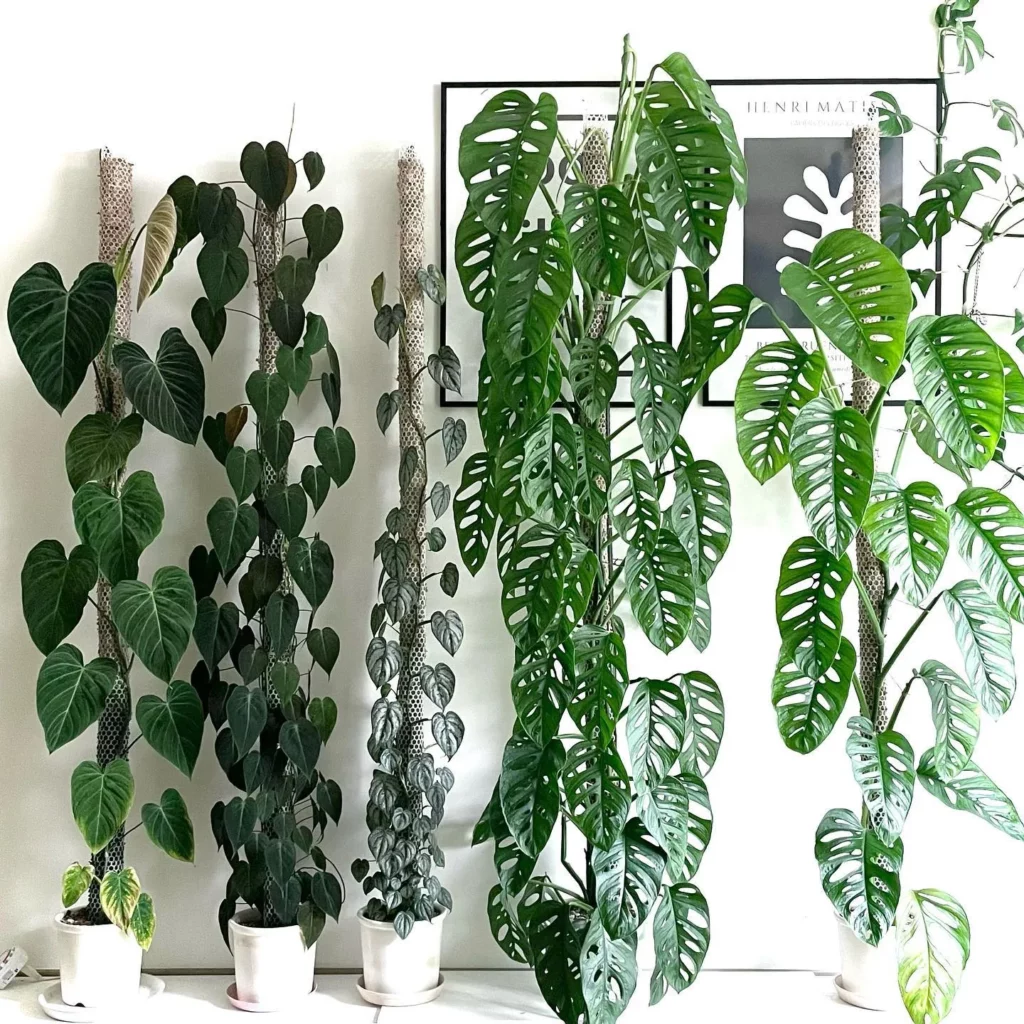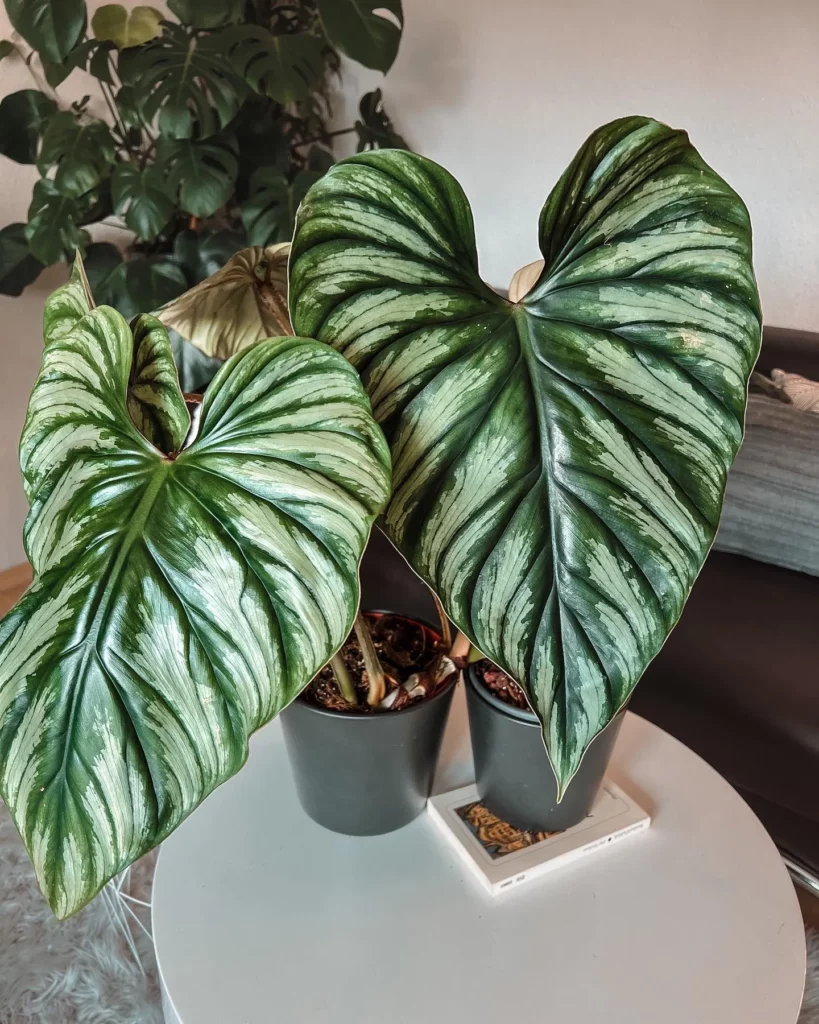To start a philodendron from a cutting, place a stem section with a few leaves in water or moist soil until roots develop.
Starting a philodendron from a cutting is a rewarding and eco-friendly endeavor that enhances your plant collection without cost, fosters a deeper connection with nature, and nurtures a sense of environmental responsibility. This method of propagation not only reduces waste and supports biodiversity conservation in the face of habitat destruction and climate change but also strengthens community bonds and environmental awareness by sharing cuttings and encouraging others to cultivate their own green spaces.
Starting Your Philodendron Propagation Journey



Now that we’ve established the benefits of propagating plants through cuttings let’s dive into how you can start growing your own philodendrons! A popular houseplant admired for its beautiful foliage and air-purifying qualities, philodendrons are an excellent choice for beginners looking to hone their propagation skills.
The first step in starting your philodendron propagation journey involves choosing the right cutting. It’s essential that you select healthy and mature stems that are free from diseases or pests.
No products found.
Avoid taking cuttings from wilted or yellowing leaves as this could indicate underlying health issues in the mother plant. Once you’ve selected your cutting, it’s time to prepare it for rooting.
Remove any leaves from the bottom of the stem and trim it to the desired length. A clean, sharp pair of scissors or pruning shears should be used to ensure a clean cut that minimizes damage to the plant.
The Role Of Rooting Hormones

While not essential, rooting hormone can help expedite root growth in your philodendron cutting. Rooting hormones contain auxins, which are naturally occurring plant hormones that promote root development. Simply dip your cutting into the rooting hormone and then plant it in soil or water as usual.
If you’re looking for a more natural alternative, consider using honey or cinnamon as a rooting hormone substitute. Both honey and cinnamon have antibacterial properties that help prevent disease while promoting root growth.
Planting Your Philodendron Cutting



Now that you’ve prepared your cutting and considered using rooting hormone let’s move onto planting it! Whether you choose soil or water propagation will depend on personal preference but both methods can yield excellent results.
If planting in soil, be sure to use well-draining potting mix that’s rich in nutrients. Plant your philodendron cutting at a depth equal to the length of the stem you prepared earlier and lightly water it until moist but not waterlogged.
No products found.
If propagating in water, use a clear container so you can easily monitor root development. Change out the water every few days to keep it fresh and prevent bacteria from building up around your cutting.
Caring For Your New Philodendron Plant

Congratulations! You’ve successfully grown your own philodendron from a cutting! As with any new plant, be sure to give it plenty of love and attention as it acclimates to its new environment.
Water your philodendron well but don’t overdo it – philodendrons prefer moist soil but will rot if they’re kept too wet. Keep it in a warm, bright spot but avoid direct sunlight as this can scorch the leaves.
Starting a philodendron from a cutting is an excellent way to expand your plant collection while promoting environmental awareness and community building. With a little patience and care, you’ll soon have a thriving new plant to enjoy!
Choosing The Right Cutting



The Importance Of Selecting A Healthy And Mature Stem For Cutting
Starting a philodendron from a cutting is a great way to propagate your favorite plants. But if you want to have success with this method, it is important to choose the right cutting. You want to select a stem that is healthy, mature, and has plenty of nodes where roots can grow.
When selecting a stem for cutting, make sure it is at least 4-6 inches long and has several leaves. Avoid stems that are too thin or too thick as they may not be able to sustain the new growth.
Look for stems that are firm and not wilted or damaged. It is also important to choose a stem with plenty of nodes where roots can grow.
Nodes are the points on the stem where leaves emerge, and they are essential for rooting. Make sure there are at least two nodes on the stem you select.
No products found.
Taking Cuttings From Friends Or Neighbors’ Plants Can Be An Eco-Friendly Option
Another option when selecting cuttings is to take them from friends or neighbors’ plants. This can be an eco-friendly option as it reduces waste by reusing plant materials that would otherwise be discarded. Before taking cuttings from someone else’s plant, make sure you ask for permission first.
It is also important to inspect their plant beforehand to ensure it is healthy and free from any pests or diseases. If you do decide to take cuttings from someone else’s plant, make sure you follow proper protocol when propagating them.
This includes using clean tools, sterilizing them between each cut and planting in sterile soil or water. By choosing healthy stems with plenty of nodes and considering eco-friendly options like taking cuttings from friends or neighbors’ plants, you will increase your chances of success when propagating philodendrons through cuttings.
Preparing The Cutting: The First Step To Propagating A Healthy Philodendron

Starting a philodendron from a cutting is an excellent way to propagate your plant collection without spending money on new ones. But, before you start snipping away at your beloved philodendron, it’s essential to know how to prepare the cutting correctly. Proper preparation ensures that the cutting roots quickly and healthily.
To prepare the cutting, you’ll need a sharp and clean pair of scissors or pruning shears. Avoid using dull blades as these can cause damage and may even crush the stem instead of making a clean cut.
You don’t want any open wounds as this can make it easier for bacteria and fungus to enter. The next step is removing any leaves that will be below the soil line once you plant the cutting.
Leaving them on can lead to rotting or diseases that affect both your parent plant and new cutting. This step may feel counter-intuitive since leaves are necessary for photosynthesis, but don’t worry; there will be more than enough energy stored in the stem itself for rooting.
Once you have removed all unnecessary leaves, trim the stem using sharp scissors or pruning shears. Cut just below where a leaf attaches to ensure that there’s enough space for roots to grow from beneath it without getting tangled up in old growth.
Using Sharp Tools: The Key To Success
Ensuring that your tools are sharp might seem like an unnecessary detail, but believe me when I say that it makes all the difference when it comes time for rooting. A dull blade crushes and tears instead of making clean cuts which can damage both parent plant and new growth – not ideal if you’re trying to create healthy cuttings.
No products found.
Investing in good quality scissors or pruning shears might seem like an unnecessary expense, but it’s worth every penny if you plan on propagating plants regularly. Sharp tools create clean cuts, which reduce the chances of infection and give your plant the best chance of rooting successfully.
The Importance Of Removing Leaves



Leaves may be necessary for photosynthesis, but when it comes to propagating philodendrons, removing them is essential. Doing so reduces the risk of rotting or diseases and ensures that all energy goes into producing healthy roots instead of sustaining leaves that will likely die off anyway.
Keep in mind that you don’t need to remove every single leaf; just those that will be below the soil line once you plant your cutting. Leaving a few leaves on top helps the new growth continue to photosynthesize while it develops its roots.
Trimming For Success
Trimming your cutting might seem like an insignificant step in the process, but it’s crucial if you want healthy roots to develop quickly. Cutting just below where a leaf attaches ensures that there’s enough space for new growth without leaving any old-growth behind to hinder progress.
If you’re unsure where to make your cut, remember this rule: The cutting should have at least two nodes (the points where leaves attach) above and one or two below the cut. This gives your new philodendron a head start in developing both shoots and roots simultaneously – something every propagator strives for!
Preparing a philodendron cutting correctly is an essential first step towards successful propagation. Always use sharp tools when making cuts and remove any leaves that will be buried beneath soil level before planting.
Trimming correctly guarantees enough space for new growth without hampering root development. With these tips in mind, go forth and propagate!
Rooting Hormone: Boost Or Bust?

The Case For Rooting Hormone
If you’re looking to propagate your philodendron as quickly and effectively as possible, rooting hormone may seem like a no-brainer. After all, this product is specifically designed to stimulate root growth, which can result in faster and healthier plant development.
And with so many different brands and formulations available on the market today, it’s easy to find a rooting hormone that fits your needs and budget. But here’s the thing: while rooting hormone can certainly be useful in some situations, it’s not always necessary or even desirable.
For one thing, many commercial rooting hormones contain synthetic chemicals that may not be safe for you or the environment. In addition, these products can be expensive and may not always deliver the promised results.
Natural Alternatives: Honey And Cinnamon
So what are your options if you want to avoid using rooting hormone? Fortunately, there are plenty of natural alternatives out there that can help get your philodendron cutting rooted and thriving in no time.
One popular option is honey, which contains natural enzymes that can encourage root growth while also protecting the plant from harmful bacteria and fungi. Another great natural alternative is cinnamon.
This spice has antifungal properties that make it an ideal choice for preventing diseases in newly propagated plants. Plus, like honey, cinnamon is readily available at most grocery stores and won’t break the bank.
The Bottom Line
While rooting hormone does have its merits when it comes to propagating philodendrons (and other plants), it’s not always the best choice for everyone. If you’re concerned about using synthetic chemicals or want to save money on your propagation efforts, consider trying one of our recommended natural alternatives instead. With a little patience and care, you’ll be able to successfully root your philodendron cutting in no time – without relying on expensive or potentially harmful products.
Going The Natural Route: A Sustainable Choice
In addition to being safe and effective, using natural alternatives like honey and cinnamon can also be a great way to promote sustainability in your gardening practices. By avoiding synthetic chemicals and relying on simple, readily available ingredients, you’re doing your part to reduce waste and protect the environment.
Moreover, propagating plants through cuttings is an excellent way to reduce your carbon footprint by avoiding the energy-intensive processes involved in traditional plant production. By taking a cutting from an existing plant (such as one owned by a friend or family member), you’re essentially recycling resources and reducing the need for new plants to be grown from scratch.
So next time you’re thinking about starting a new philodendron – or any other plant – consider going the natural route with rooting hormone alternatives like honey and cinnamon. Not only will you be doing your part for the planet, but you’ll also be reaping the benefits of healthier, more sustainable gardening practices.
Planting The Cutting



Get Ready For Planting
So, you’ve got yourself a fresh cutting and you’re ready to plant it. But before you get started, make sure you have all the necessary supplies.
If planting in soil, be sure to have a pot with drainage holes and some high-quality potting soil. If rooting in water, grab a clear glass or jar and distilled water.
Planting In Soil
When planting your cutting in soil, be sure to choose a pot that is just slightly larger than the cutting itself. This will help prevent excess moisture buildup around the roots, which can lead to root rot.
Make sure the pot has drainage holes so any excess water can drain away. Fill the bottom of the pot with a layer of small rocks or gravel to aid in drainage before adding your potting soil.
Then, use your finger or a pencil to create a hole just deep enough for your cutting. Insert it into the hole and gently press down on the soil around it to secure it in place.
Rooting In Water
If rooting your cutting in water, fill a clear glass or jar with distilled water and place your cutting inside so that only about an inch of stem is submerged. It’s important to use distilled water as tap water may contain chemicals that can harm the plant. Be sure to change out the water every few days to prevent bacterial growth and monitor for any signs of rot or disease on both the stem and roots as they start forming.
The Benefits Of Clear Containers
If rooting your philodendron cutting in water, consider using a clear container instead of an opaque one. This will allow you to easily monitor root growth and check for any issues such as rot or disease.
Plus, there’s something satisfying about watching those white roots grow and develop! Not to mention, clear containers can add a nice decorative touch to your space.
Planting a philodendron cutting is not as daunting as it may seem. With the right preparation and care, you’ll be on your way to growing a beautiful new plant.
Whether you choose to root in water or soil, be sure to take your time and pay attention to the needs of your cutting. And don’t forget, there’s nothing wrong with talking to your plants – they just might appreciate it!
Caring For Your New Plant

Watering Your Philodendron
Let me start by saying that watering your philodendron is CRUCIAL to its survival. I’m sorry if this sounds like common sense, but you’d be surprised how many people forget to water their plants until it’s too late. Over-watering is just as bad as under-watering and can lead to root rot.
So, what’s the key to success? Consistency!
Your philodendron should be watered once a week, but make sure the soil has had a chance to dry out slightly before watering again. And remember, different species of philodendrons have different water requirements so do your research and adjust accordingly.
Light Requirements
Philodendrons are native to tropical rainforests where they grow under the canopy of trees, receiving filtered light. That being said, they still need some light to grow and thrive. Direct sunlight can scorch their leaves so it’s best to place them in bright but indirect light.
If you’re not sure if your plant is getting enough light or too much, pay attention to its leaves. Brown spots or yellowing may indicate too much sun while drooping or stretching may mean not enough.
Talk To Your Plants
Yes, you read that right – talk to your plants! While some people may scoff at this idea, there’s actually scientific evidence that suggests talking positively to plants can have positive effects on their growth!
Studies have shown that talking positively (or playing music) around plants can increase their growth rate and general health due to the release of carbon dioxide from human breaths which helps with photosynthesis. So don’t be shy – strike up a conversation with your new philodendron and watch it flourish!
Frequently Asked Questions
Yes, philodendrons can be propagated by rooting them in water. This method involves placing a stem cutting with at least one node in a container of water, ensuring the node is submerged. Keep the water clean and change it regularly to prevent stagnation. Over time, the cutting will develop roots, and once the roots are well-established, it can be transferred to a pot with soil for further growth.
Philodendrons can be propagated at any time of the year, but the ideal time is during the growing season, which is typically in spring or early summer. During this time, the plants are actively growing, and the warm temperatures and increased daylight hours promote successful root development and overall propagation success.
Yes, it is possible to plant a philodendron cutting without roots. In fact, stem cuttings without roots are commonly used for propagation. Ensure the cutting has at least one node, as this is where new roots will emerge. Plant the cutting in a well-draining potting mix, burying the node and a portion of the stem in the soil. With proper care and favorable conditions, the cutting will develop roots and grow into a new philodendron plant.
To propagate a cut leaf philodendron, select a healthy leaf with an intact stem attached. Make a clean cut just below a node on the stem. Place the cut end of the stem in a container of water or directly into a well-draining potting mix. If using water, ensure the node is submerged. If using soil, bury the node in the soil while keeping the leaf above the surface. Provide adequate moisture, warmth, and indirect light. With time and proper care, new roots will develop from the node, leading to the growth of a new philodendron plant.
After reading this, check out our other articles on:
Conclusion: Propagating Plants Through Cuttings Is Easy And Rewarding



Starting a philodendron from a cutting is a simple and rewarding process that any plant enthusiast should try. By following these steps, you can easily propagate new plants without spending money on store-bought cuttings or having to risk harming the original plant.
In this article, we’ve highlighted the key steps in starting a philodendron from a cutting. First, choosing the right cutting is essential to ensure that your new plant will grow strong and healthy.
Remember to select a mature stem with plenty of leaves for photosynthesis. Next, preparing the cutting by removing leaves and trimming it to size will set it up for success.
Using rooting hormone can also encourage faster root growth for your new plant. However, it’s important to remember that natural alternatives like honey or cinnamon are healthier options that won’t harm you or your plant.
When planting your cutting, be sure to use proper soil or water and keep an eye on its progress. Caring for your new philodendron by providing adequate light and water will ensure its longevity in your home.
The benefits of propagating plants through cuttings go beyond just saving money – it’s also environmentally friendly! By taking cuttings from friends or neighbors’ plants instead of purchasing new ones from stores, we can reduce waste and promote sustainability.
Starting a philodendron from a cutting is an easy way to expand your collection of indoor plants while also contributing positively to the environment. So grab some scissors and get propagating!





